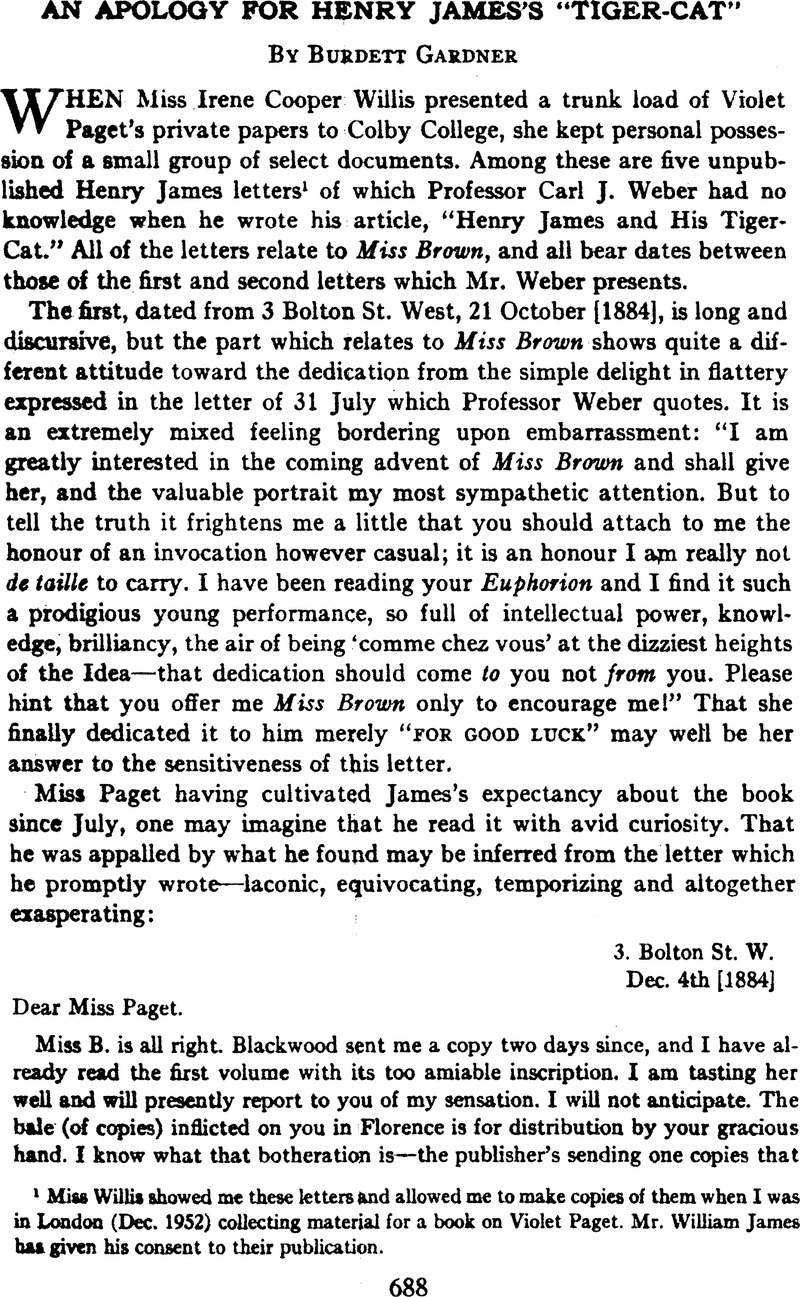Article contents
An Apology for Henry James's “Tiger-Cat”
Published online by Cambridge University Press: 24 March 2021
Abstract

- Type
- Other
- Information
- Copyright
- Copyright © Modern Language Association of America, 1953
References
1 Miss Willis showed me these letters And allowed me to make copies of them when I was in London (Dec. 1952) collecting material for a book on Violet Paget Mr. William James has given his consent to their publication.
2 Irene Cooper Willis, ed. Vernon Lee's Letters, (privately printed, 1937), p. 177.
3 Carl J. Weber, “Henry James and His Tiger-Cat,” PMLA, LXVIII (Sept. 1953), 683
4 Vernon Lee, Vanitas (New York: Lovell, Coryell, 1892), p. 106. See also a paragraph on p. 76: “Jervase Marion was in the humour when ht considered Lady Tal a legitimate subject of study, and intellectual vivisection a praiseworthy employment. Such study implies, as s rule, a good deal of duplicity on the part of the observer; duplicity doubtless sanctified, like all the rest, by the high mission of prying into one's neighbour's soul” On p. 47 she speaks of Marion's “hateful habit of studying people, of turning them round, prod-ding and cutting them to tee what was inside.”
5 For this information I am indebted to Mr. Percy Lubbock, whom I visited at Lerici in Sept. 1952. He was able to recall James's humorously exaggerated accounts of the eccentric behavior of Mrs. Paget on the occasions of his visits during the 1870's.
6 A Backward Glance (New York: D. Appleton-Century, 1934), p. 133.
7 Her grasp of history is remarkably shown in a story, “Les Aventures d'une Pièce de Monnaie,” which she wrote st the age of thirteen and a half. The imaginary history of a coin from its minting at the time of Alexander the Great to the present is used as a device for bringing successively into focus certain aspects of the history of Western civilization. The story was published st Lausanne in the French-Swiss journal La Famille in three suc-cessive installments, May, June, and July 1870.
- 2
- Cited by


